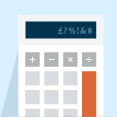Should I Pay for a Professional Inventory Service?
While most tenants will take good care of your property, even the nicest, butter-wouldn’t melt in their mouth tenants might not leave the place exactly as they found it.This is why it’s a good idea to have an inventory detailing the state of the property and all of its contents.
You don’t have to provide tenants with an inventory; some landlords don’t (which is risky) and some prepare their own (which can take hours). A professional report, compiled by an independent third party, will help to avoid any misunderstanding with tenants and provide solid evidence if you do end up in a legal dispute.
Inventories are made up of 3 parts:
The 'Make'
Don’t leave it until the last minute to arrange an inventory as you’ll need to give yourself time to read through the report to make sure it’s accurate. A good inventory clerk might spot defects you hadn’t noticed, such as a missing radiator valve or wobbly door handle, so ideally you should leave enough time to put these right before the tenant moves in. The inventory will include any outside space such as a balcony or garden. This is important, especially if you’re expecting the tenant to maintain these.
The Check In
The inventory will be used to prepare a check-in report at the start of the tenancy. This will include a ‘schedule of condition’ listing any existing damage. If you are short of time, this can be done at the same time as the inventory make itself. It’s also cheaper if you book the inventory make and a check-in together.
Find out about Upad inventory services
The check-in report also includes remarks on the cleanliness of the property as this is one of the most common areas of dispute between landlords and tenants. There are, it seems, many different interpretations of the word ‘clean’!
You should get the tenant to sign a copy of the check-in report to confirm they accept it’s accurate, but if this isn’t practical you should tell them, in writing, to let you know of any discrepancies within seven days of the start of the tenancy.
The Check Out
When the tenant moves out, you should arrange for a separate check-out report, then you compare the two to see what, if anything, to deduct from their deposit. You should invite the tenant to be present when the clerk compiles the check-out report, however it isn’t absolutely essential for them to be there as you can ask the clerk to send both you and the tenant a copy.
One of the advantages of using an independent inventory clerk is that they will mark on the check-out report whether any deterioration is beyond normal wear and tear and whether they consider any damage or deterioration to be the landlord’s or the tenant’s responsibility. This should make it easier to decide what, if anything, to deduct from the deposit.
To avoid any nasty surprises when the tenant moves out, it’s advisable to carry out regular inspections of your property throughout the tenancy, preferably every three months. Don’t worry if you think this is a lot of hassle, Upad can arrange inventories, check-ins and check-outs on your behalf and if you can’t visit your property we can even arrange regular inspections too.








